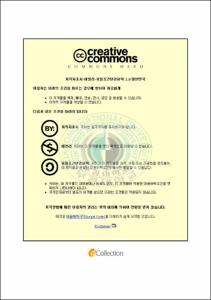가산자료모형을 이용한 연령별 활어수요함수 추정에 관한 연구
- Alternative Title
- An Estimation of Age-Stratified Demand Functions for Raw Fishes Using Count Data Model
- Abstract
- This thesis aims at estimating age-stratified demand functions, using count data which is conducted by interview survey method, and their consumption behaviour analysis for raw fishes which is an important portion of fisheries industry.
The consumption behaviour analysis for raw fishes is largely composed of choice factors of consumption places for raw fishes (such as convenience, freshness, sanitary condition, price acceptance, service level and variety of species), external ornament frequencies, preferences for raw fishes compared with fresh fishes and meats, consumption satisfaction based on tastes, health and convenience for raw fishes. As a result, freshness comes prior to the price level as the priority of choice factors of consumption places for raw fishes. Rather than the younger, the older customers are more tended to select sanitary condition factor. Regardless of the age groups, consumers prefer eating out for raw fishes to consuming at home, while the overall amount consumed is higher in older age group than the younger. In addition, the consumption of raw fishes is preferred to that of fresh fishes and meat in a field of food consumption preferences, of which raw fishes have a comparative advantage over other foods.
A main purpose of this thesis is to estimate age-stratified demand functions for raw fishes using count data model, in which consumption frequencies for raw fishes is a dependent variable; expenses per raw fish consumption, income, age and consumption preferences are independent variables. A Poisson model and a negative binomial model in count data models are applied for estimating demand functions for raw fishes in order to account characteristics of count data (non-negative discrete data.) The survey was conducted for 64, 66, 69 and 63 consumers of twenties, thirties, fourties and fifties, respectively, using personal interview method in Busan Jagalchi Fish Market and other large fish markets during May 2008. Respondents were asked about how often they eat raw fishes, income, age, consumption preferences for raw fishes, and so on. Multiple analysis of variance is employed for testing hypothesis of which null hypothesis indicates mean equality of every dependent variable of each age-group. As a result, the null hypothesis is statistically rejected at the 1% level, which means mean vector for every dependent variables per age-group is different; thus, age-stratification demand analysis has a significant implication. In a Poisson model and a negative binomial model, all parameters estimated are statistically significant at the 1%, 5% and 10% level, and theoretically valid. Using the results based on a negative binomial model, the marginal effect of consumption frequencies for raw fishes on the increase of one million won in annual income is estimated as 0.32 in the forties group which is more sensitive than any other in all age groups. It implies that an increase of one million won in annual income affects an increase of 9,415 won in annual consumption cost for raw fishes. In a different view of marginal effect, an increase of 10,000 won in cost per consumption makes annual consumption frequencies be reduced to 3.2 frequencies in thirties group, and then it makes annual consumption cost for raw fishes of 84,180 won down.
- Issued Date
- 2008
- Awarded Date
- 2008. 8
- Type
- Dissertation
- Keyword
- count data models Poisson model negative binomial model age-stratification demand function for raw fishes consumption behaviour analysis for raw fishes
- Publisher
- 부경대학교 대학원
- Alternative Author(s)
- Jung, Jin ho
- Affiliation
- 부경대학교 대학원
- Department
- 대학원 해양산업경영학과
- Advisor
- 표희동
- Table Of Contents
- Abstract = v
제1장 서론 = 1
제1절 연구배경 및 목적 = 1
제2절 연구의 범위 및 내용 = 3
제2장 선행연구 = 5
제1절 수산물 소비에 관한 선행연구 = 5
제2절 가산자료모형에 관한 선행연구 = 7
제3장 연구방법 및 분석모형 = 10
제1절 연구방법 = 10
1. 조사방법 = 10
2. 분석방법 = 11
제2절 분석모형 = 12
1. 포아송모형 = 12
2. 음이항모형 = 14
제4장 활어소비 실태분석 = 16
제1절 소비장소 선택 = 16
제2절 활어소비 외식비중 = 17
제3절 활어선호도 = 18
제4절 요인별 활어소비 만족도 = 22
제5절 대체재와의 선호비교 = 26
제5장 실증분석 결과 = 29
제1절 통계자료 = 29
제2절 모형추정결과 = 31
제3절 한계효과분석 = 39
제6장 결론 = 44
【참고문헌】 = 48
부록 = 50
- Degree
- Master
- Files in This Item:
-
-
Download
 가산자료모형을 이용한 연령별 활어수요함수 추정에 관한 연구.pdf
기타 데이터 / 1.11 MB / Adobe PDF
가산자료모형을 이용한 연령별 활어수요함수 추정에 관한 연구.pdf
기타 데이터 / 1.11 MB / Adobe PDF
-
Items in Repository are protected by copyright, with all rights reserved, unless otherwise indicated.